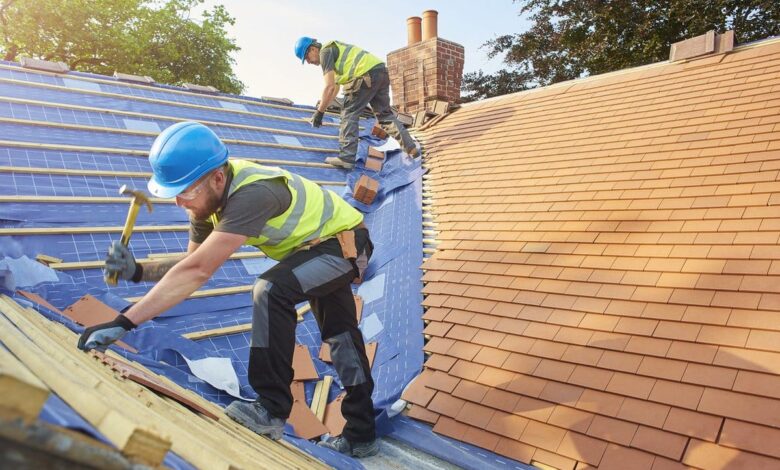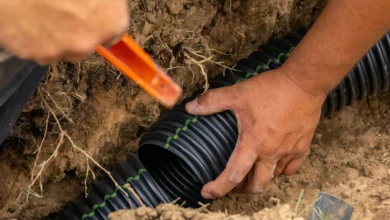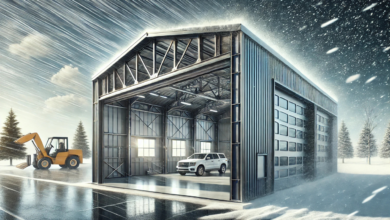Protecting Your Home from the Top Down: A Guide to Modern Roofing Solutions

When it comes to maintaining a safe, comfortable, and energy-efficient home, the roof is one of the most critical elements. Often overlooked until a leak appears or shingles begin to curl, the roof plays a vital role in safeguarding your living space from environmental stressors, insulating your home, and supporting its structural integrity.
For homeowners, understanding residential roofing in Montclair NJ isn’t just a matter of maintenance—it’s a matter of long-term investment. The choices you make about roofing materials, contractors, and upkeep strategies can influence your property’s value, energy efficiency, and appearance for decades.
In this comprehensive guide, we’ll explore the key aspects of residential roofing, including material options, installation processes, maintenance tips, common myths, and how to select the right roofing professionals for the job.
What Makes Residential Roofing Unique?
Unlike commercial roofing—which often involves flat or low-sloped systems and large-scale utility considerations—residential roofing is focused on protecting personal homes with pitched roof structures. These roofs must perform multiple functions simultaneously:
- Protect the building from weather
- Provide insulation and ventilation
- Support aesthetic appeal and architectural design
- Enhance long-term property value
Because every home has its own architectural style, climate exposure, and owner preferences, the world of residential roofing is incredibly diverse. Homeowners must consider not only the appearance of their roof but also its resistance to moisture, wind, UV rays, and temperature extremes.
Most Popular Roofing Materials for Homes
Selecting the right roofing material is a major decision. Each option comes with a different price point, durability range, and set of pros and cons. Here are the most commonly used materials in residential roofing today:
1. Asphalt Shingles
Asphalt shingles are by far the most common residential roofing material, primarily due to their affordability and ease of installation. They come in a wide variety of colors and textures and are generally backed by warranties ranging from 20 to 30 years.
2. Metal Roofing
Metal roofs are increasing in popularity for their durability and modern appearance. They reflect solar radiant heat, which can help reduce energy costs, and often last 40–70 years depending on the material used (e.g., aluminum, steel, copper).
3. Clay and Concrete Tiles
These are heavy, durable, and extremely fire-resistant. Tile roofing is often used for Mediterranean or Spanish-style homes. It’s more expensive but can last for more than 50 years with proper maintenance.
4. Slate
Slate is a high-end roofing material known for its natural beauty and longevity. While costly and heavy, a slate roof can last over 100 years and offers outstanding durability and fire resistance.
5. Wood Shingles and Shakes
These offer a natural, rustic look that blends well with cabin-style or historic homes. However, they require more maintenance and are less fire-resistant than other options unless specially treated.
Layers of a Residential Roof System
Many people think of a roof as just the outer covering, but a quality residential roofing system is made up of several critical layers:
- Roof Decking: The base that supports the roofing material, typically made of plywood or OSB.
- Underlayment: A moisture barrier laid between the decking and the outer material.
- Flashing: Thin metal strips used to seal and direct water away from joints, chimneys, and vents.
- Drip Edge: Installed at edges to channel water off the roof.
- Shingles or Tiles: The outermost layer that provides weather resistance and visual appeal.
- Ventilation Components: Allow airflow through the attic to prevent moisture buildup and temperature extremes.
Each layer serves a purpose in protecting your home and maximizing the lifespan of your roofing system.
Signs It’s Time to Replace Your Roof
Most homeowners delay roof replacement until a visible leak forces action. However, there are often earlier signs that your roof may be failing:
- Cracked, curled, or missing shingles
- Shingle granules in the gutters
- Sagging rooflines or soft spots
- Stains on ceilings or walls
- Visible daylight through attic boards
- Age beyond the manufacturer’s warranty
Proactive inspections can catch minor issues before they become costly structural problems.
Installation: What to Expect from Start to Finish
The process of installing a new residential roof typically involves the following steps:
Step 1: Inspection and Planning
A roofing professional will assess your current roof’s condition and help you choose appropriate materials and features.
Step 2: Tear-Off
The old roofing materials are completely removed to expose the decking beneath. This ensures that hidden rot or damage is addressed before new materials are installed.
Step 3: Deck Repair and Underlayment
Damaged decking is replaced, and a waterproof underlayment is installed to protect against moisture.
Step 4: Flashing and Ventilation
Critical areas around vents, chimneys, and skylights are sealed with flashing. Proper ventilation systems are also installed to ensure airflow.
Step 5: Shingle or Tile Installation
New roofing materials are carefully laid, typically starting at the base and moving upward to ensure optimal water shedding.
Step 6: Cleanup and Final Inspection
The contractor should clean up all debris and conduct a final inspection to ensure everything is sealed and aligned properly.
How to Maintain a Residential Roof
Like any major investment, a roof requires ongoing care to reach its full potential lifespan. Here are some essential maintenance tips:
- Annual Inspections: Hire a professional to inspect your roof at least once per year and after major storms.
- Gutter Cleaning: Clogged gutters cause water to back up under the shingles. Clean them regularly.
- Trim Overhanging Branches: Tree limbs can scrape shingles and drop debris that holds moisture.
- Moss and Algae Treatment: Growth can degrade roofing materials over time. Use appropriate, non-damaging treatments.
- Seal and Caulk Flashing: Reapply sealant if it starts to crack or peel.
Regular maintenance can delay the need for full replacement and protect your warranty coverage.
Common Roofing Myths Debunked
Many misconceptions surround residential roofing, which can lead to poor decision-making or unnecessary expenses. Let’s clear up a few:
Myth 1: A Roof Lasts as Long as the Warranty
Warranties are not guarantees. A 30-year shingle may only last 20 years depending on climate, installation quality, and maintenance.
Myth 2: You Can Install New Shingles Over Old Ones
Although it may be legal in some areas, layering new shingles over old ones can reduce durability and void warranties.
Myth 3: All Roofing Contractors Are the Same
Hiring an unlicensed or inexperienced roofer can result in improper installation, legal issues, and costly repairs.
Choosing the Right Contractor
The quality of your roofing project hinges on the professionalism and experience of your contractor. Here’s what to look for:
- Licensed and Insured: Verify credentials and ensure they carry liability and worker’s comp insurance.
- Experience in Residential Roofing: Specialization matters. A contractor experienced in commercial projects may not be the right fit for a home.
- Transparent Estimates: A detailed, written quote helps you understand what you’re paying for.
- Workmanship Warranty: In addition to material warranties, reputable contractors offer guarantees on their labor.
- References and Reviews: Ask for past customer referrals and check online testimonials.
Choosing the right partner for your roofing project is critical to ensuring long-term success and peace of mind. You can find trusted professionals in your area who specialize in Residential Roofing and provide high-quality, affordable services.
The Future of Residential Roofing: Sustainable Innovations
Sustainability and efficiency are driving the future of home construction. Roofing technology has come a long way in recent years. Some of the most exciting innovations include:
- Cool Roofs: Reflective materials that reduce heat absorption and lower cooling costs.
- Solar Roof Panels: Integrated photovoltaic panels that blend with traditional roofing materials.
- Recycled Shingles: Many manufacturers now offer eco-friendly products made from recycled materials.
- Green Roofs: Living roofs with vegetation layers that absorb rainwater and insulate buildings.
Homeowners looking to reduce their environmental footprint should consider these options when replacing or updating their roofing systems.
Final Thoughts
A quality roof is more than just a functional necessity—it’s an investment in your home’s comfort, value, and safety. Whether you’re building from scratch, upgrading for energy efficiency, or responding to damage, understanding your options for residential roofing is key.
The right roofing material, installed by skilled professionals and maintained properly, can last for decades. Take the time to explore different materials, request multiple estimates, and work with a contractor you trust.
Remember, Residential Roofing isn’t just about shingles—it’s about securing your home from the top down.




